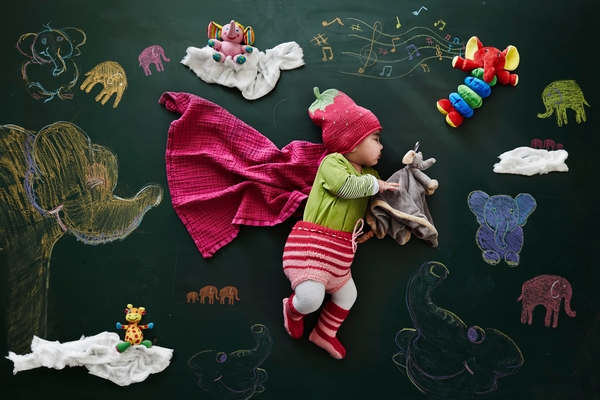 We were asked to take four different free personality tests and compare the results to our personal perception of how we present ourselves.
We were asked to take four different free personality tests and compare the results to our personal perception of how we present ourselves.
Test One:
This test is a version of the Jung Typology, or MBTI, test where your personality is defi
ned
as four letters. Usually I’m an ENFP, but this test actually scored me an ENTP. According to the website, I would be a deviant kind of creative, overly ambitious in nature, loyal, debate-prone, and… entertaining at the very least. I think this is pretty accurate. At my core, I’m an artistic girl with a penchant for adventure and perverse humor. I take on too many projects, set my sights too high, and it usually ends in an Icarus-type scenario. Also according to the quiz, I should be fond of playing Devil’s advocate, which can be fondly remembered in my middle school self’s habit of “defending” Nazi Germany in world history class debates. Although I obviously didn’t sympathize with Hitler, it was extremely entertaining to go against the crowd in such a way. And, yeah, my friends say I’m an amusing human being.
I’ve seen a lot of these tests in my 18 years, and this one’s pretty standard: a gradient selection which allows you to pick degrees of an answer, a bunch of questions based on self judgement. The site’s also gotten pretty positive reviews from users who claim the results are reliable, and the information page is well researched as this is basically a sample of a for-sale product. I’d trust the credibility of the test.
While I’m not quite as optimistic as ENTPs tend to be, and I do have a strong introvert side, I’d score this quiz a solid 9/10.
The second test is another variation of the MBTI test. However, instead of ENFP or ENTP, I scored an ENTJ. Puzzled, I read the qualities listed and found myself not identifying with many. For instance, it propositions that I’m a very completion-oriented person who needs to be in charge and often grazes over either their own emotions or others. I’d only really agree that I prefer leading–but I’m also one hundred percent fine with following a leader so long as they’re competent… As for the other stuff, no. I am highly empathetic. I have a million projects going at once and have big problems getting anything in on time (lol). A look at my art desk will prove that.
I speculate that part of the reason for the inaccuracies have to do with the format of the quiz. As opposed to Test One, Test Two relied on a binary. You had one of two choices, not allowing for all the options desired. This probably led to the inaccuracy.
3/10.
What an interesting one! I feel as though I’ve taken this test before, but I didn’t have a clue as to what the results would be. This test rated you on a high-to-low scale in five “big” categories supposed to define your personality.
 As you can see, I score high in extroversion, agreeableness, and intellect/imagination. I’d have to approve. In general, I’m an extroverted individual who has a natural disposition for maintaining friendships, and I’m always open to new experiences. The weirder the better, especially if I’ve got a friend by my side. Additionally, my low scorings in emotional stability and conscientiousness didn’t come as a surprise. I’m easily swayed by my moods, and I’m a disorganized mess. Didn’t really learn too much new.
As you can see, I score high in extroversion, agreeableness, and intellect/imagination. I’d have to approve. In general, I’m an extroverted individual who has a natural disposition for maintaining friendships, and I’m always open to new experiences. The weirder the better, especially if I’ve got a friend by my side. Additionally, my low scorings in emotional stability and conscientiousness didn’t come as a surprise. I’m easily swayed by my moods, and I’m a disorganized mess. Didn’t really learn too much new.
The accuracy of this test probably stems from the gradient answer system which worked for me so well on the first test. It also cites Goldberg in the introduction.
8/10 because it’s kind of bare bones.
Another interesting one. This quiz had me randomly select colored squares based on intuition, wait a few minutes, and then redo the colored square selections. It’s then supposed to figure out your personality. Surprisingly, it was very accurate. It predicted that I’m an emotional, artistic person who lusts after beauty, intimate relationships, and who feels as though there’s more to the world than the present. I’m also prone to feeling isolated, can often be cornered into compromises, and have some difficulty appreciating the small things in life. It was really only erroneous in calling me a conceited person or that I easily become involved in pointless activities.
7/10.


 We were asked to take four different free personality tests and compare the results to our personal perception of how we present ourselves.
We were asked to take four different free personality tests and compare the results to our personal perception of how we present ourselves. As you can see, I score high in extroversion, agreeableness, and intellect/imagination. I’d have to approve. In general, I’m an extroverted individual who has a natural disposition for maintaining friendships, and I’m always open to new experiences. The weirder the better, especially if I’ve got a friend by my side. Additionally, my low scorings in emotional stability and conscientiousness didn’t come as a surprise. I’m easily swayed by my moods, and I’m a disorganized mess. Didn’t really learn too much new.
As you can see, I score high in extroversion, agreeableness, and intellect/imagination. I’d have to approve. In general, I’m an extroverted individual who has a natural disposition for maintaining friendships, and I’m always open to new experiences. The weirder the better, especially if I’ve got a friend by my side. Additionally, my low scorings in emotional stability and conscientiousness didn’t come as a surprise. I’m easily swayed by my moods, and I’m a disorganized mess. Didn’t really learn too much new.
